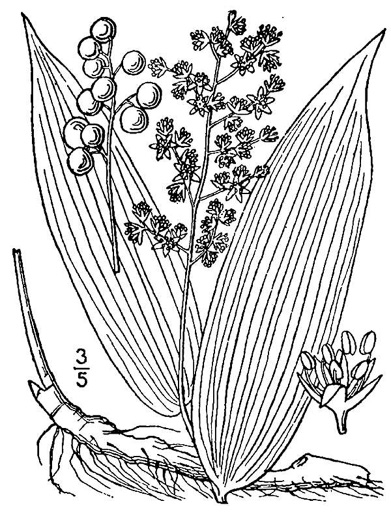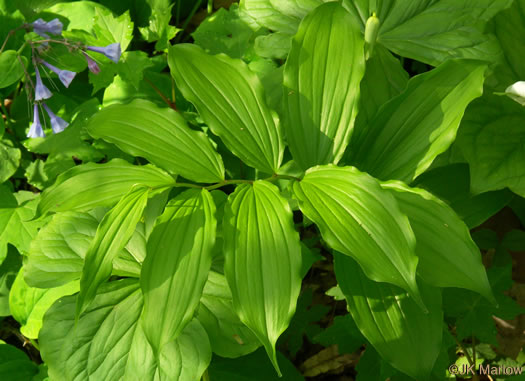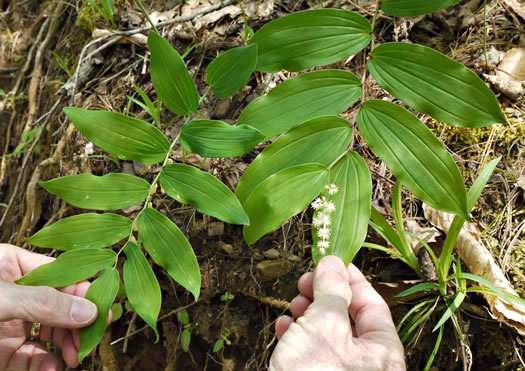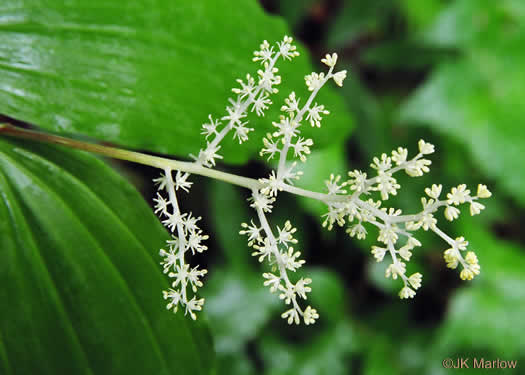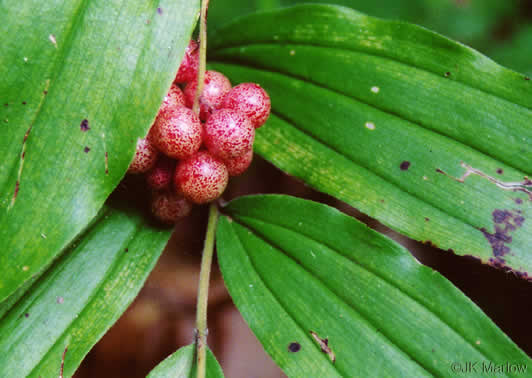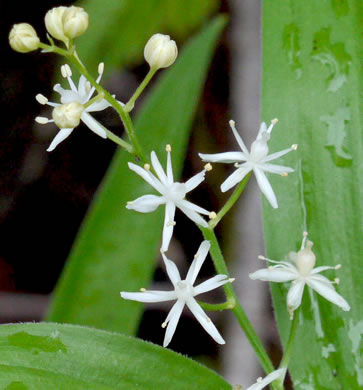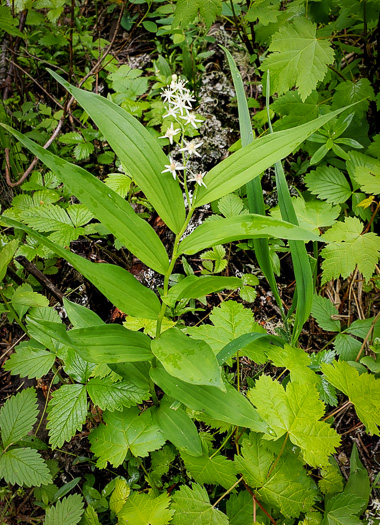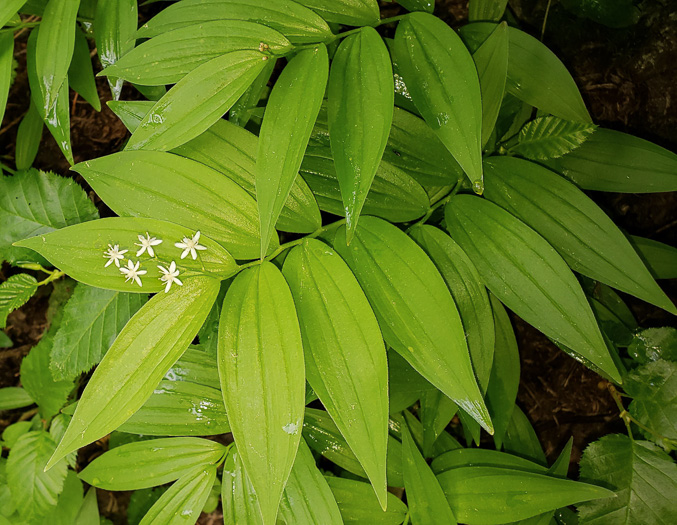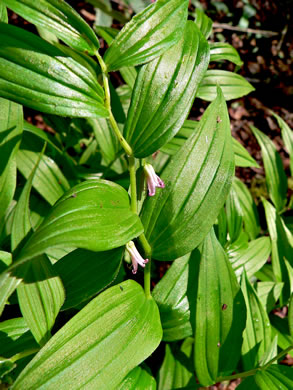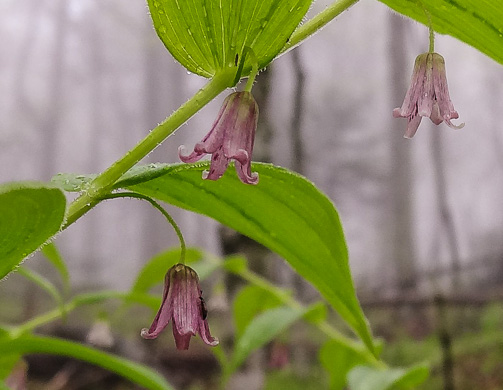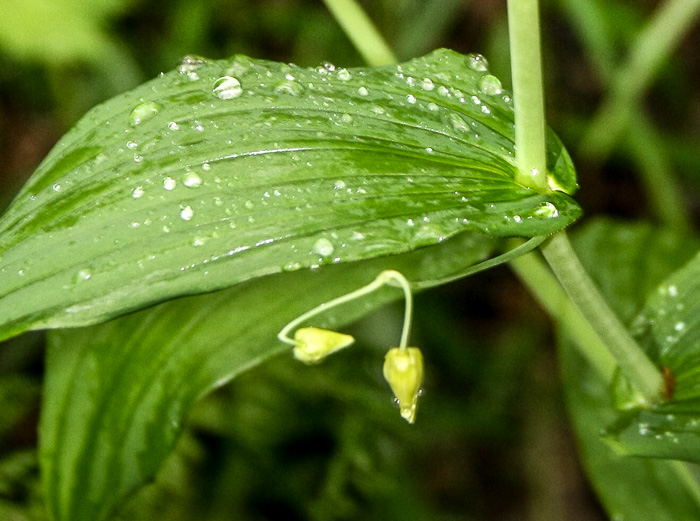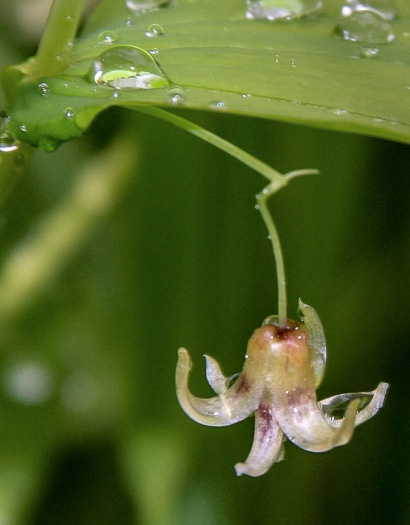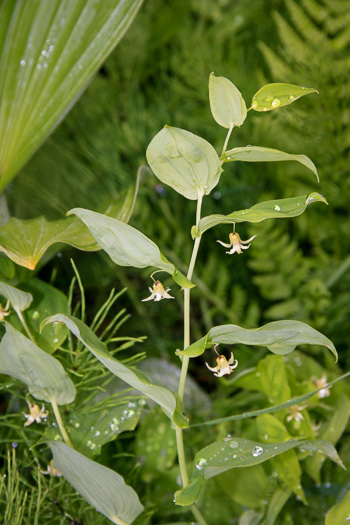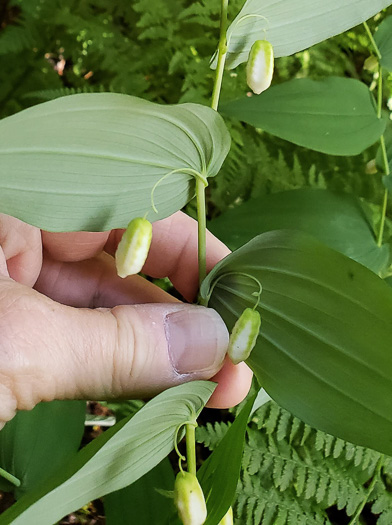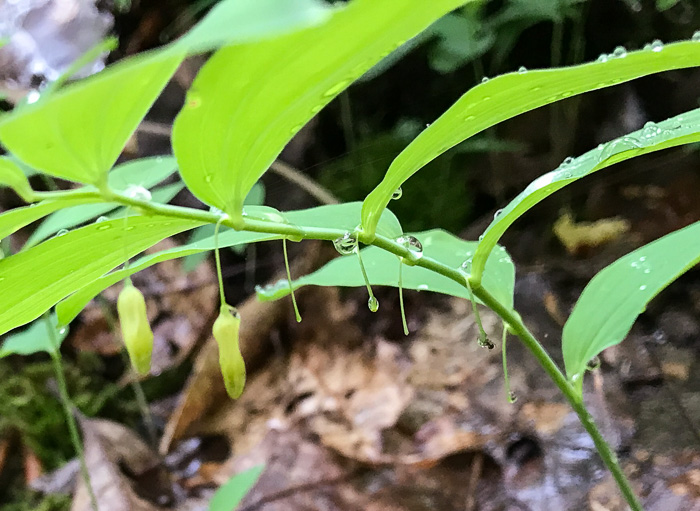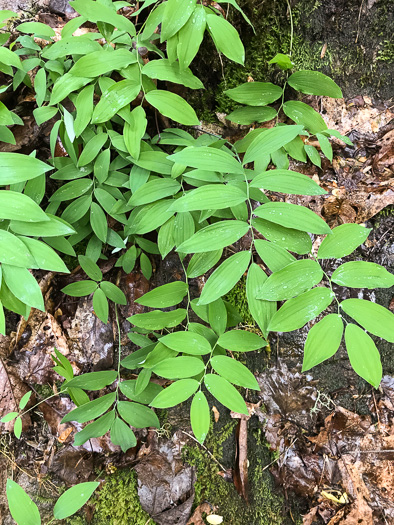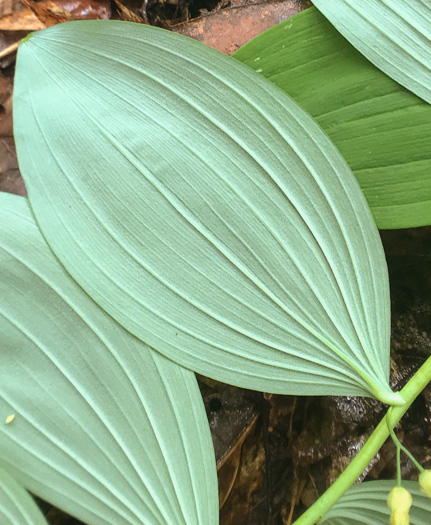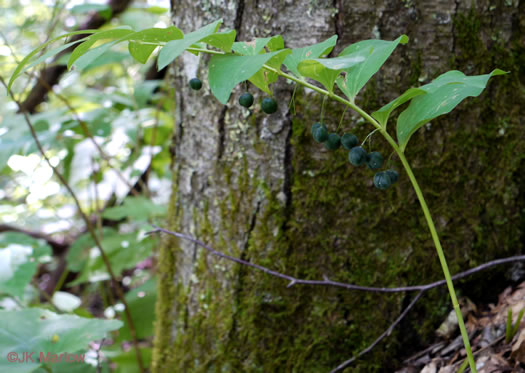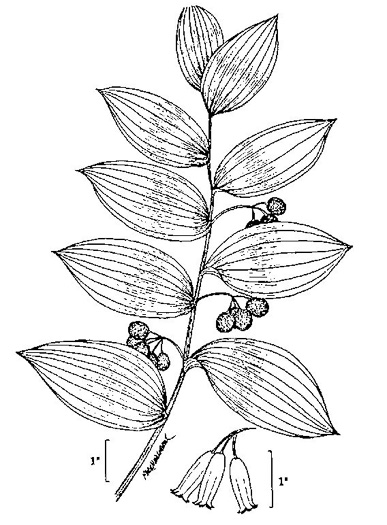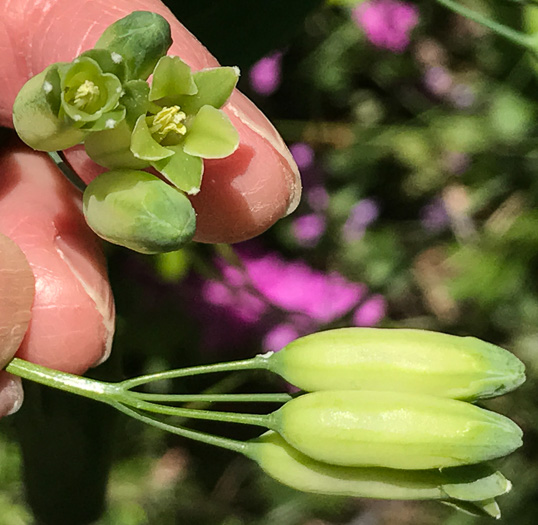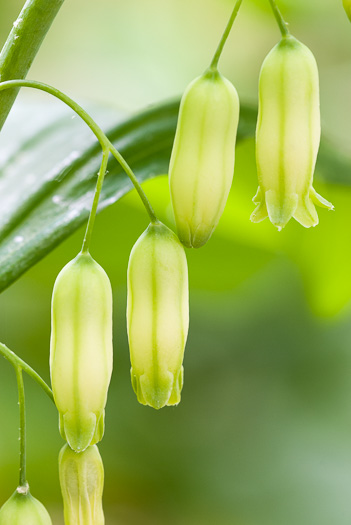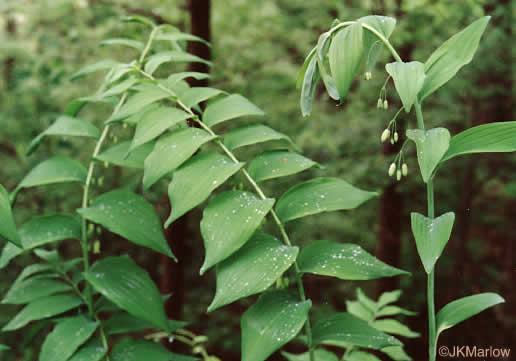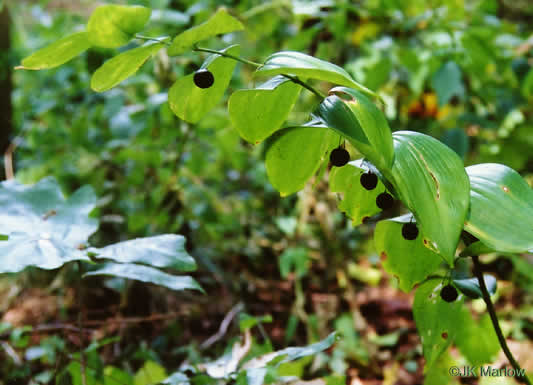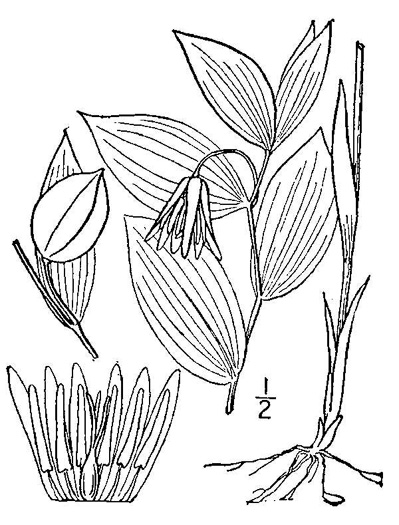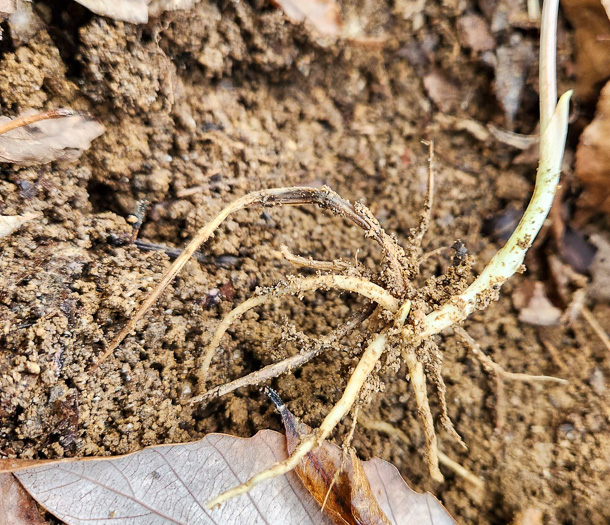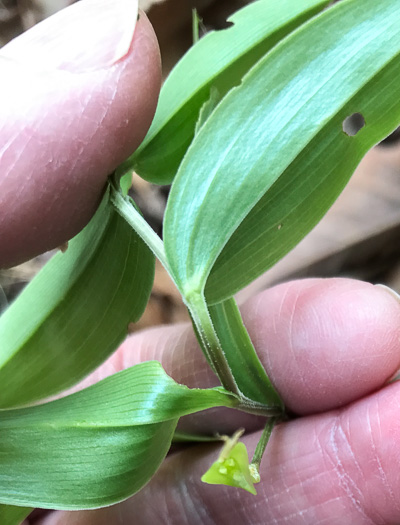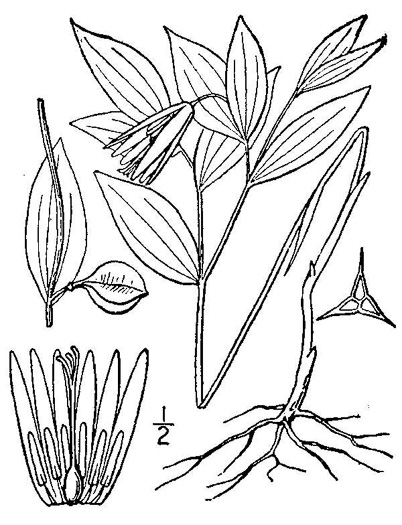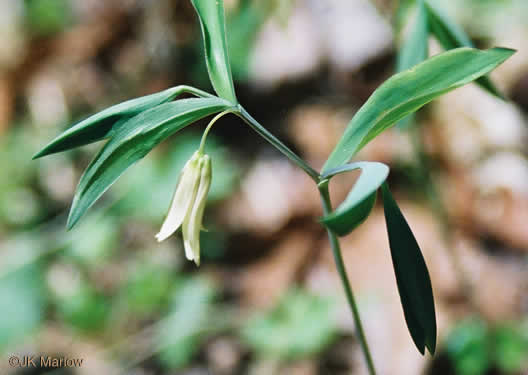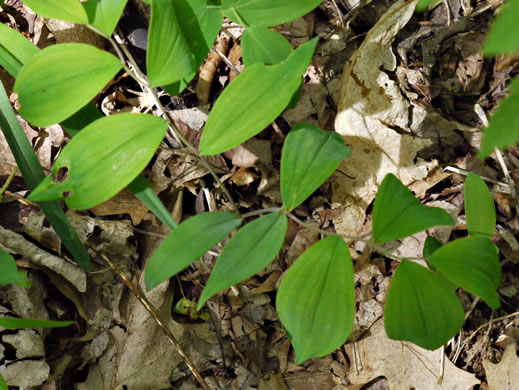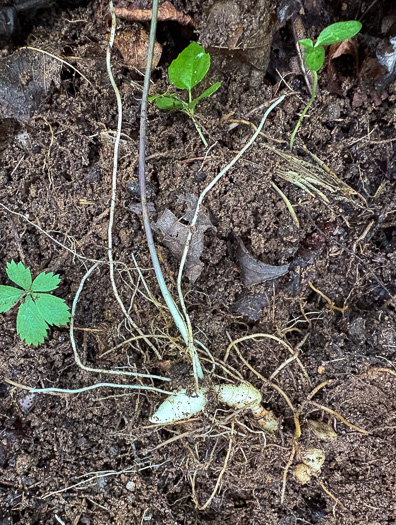Your search found 41 image(s) of Solomon's Plume, Solomon's Seal, Twisted Stalk, and two Bellworts.
To see larger pictures, click or hover over the thumbnails.
To go to the plant's detail page, click its name.
 Habitat: Moist to dry forests
Habitat: Moist to dry forests
Numerous flowers in a dense terminal panicle 2-6" long, per Wildflowers of Tennessee, the Ohio Valley, and the Southern Appalachians (Horn, Cathcart, Hemmerly, & Duhl, 2005).
Just before maturity the berry is green finely dotted with red, per Vascular Flora of the Carolinas (Radford, Ahles, & Bell, 1968).
 Habitat: Alluvial forests, calcareous fens, seepage swamps
Habitat: Alluvial forests, calcareous fens, seepage swamps
Flowers in a simple raceme; perianth segments 6; peduncle usually < 2cm long;, per Weakley's Flora (2022).
Leaves 6-11 per stem; leaf blades sessile or subclasping at the base, per Weakley's Flora (2022).
 Habitat: Moist forests at high elevations, especially spruce-fir and northern hardwoods forests
Habitat: Moist forests at high elevations, especially spruce-fir and northern hardwoods forests
Leaves alternate in 2 rows, sessile, with prominent parallel veins, per Wildflowers of Tennessee, the Ohio Valley, and the Southern Appalachians (Horn, Cathcart, Hemmerly, & Duhl, 2005).
Leaf margins fringed with short hairs, per Wildflowers of Tennessee, the Ohio Valley, and the Southern Appalachians (Horn, Cathcart, Hemmerly, & Duhl, 2005).
Flowers rose or purplish, bell-shaped, hanging singly from a short pedicel beneath the axils, per Wildflowers of the Southern Mountains (Smith, 1998).
Tepals 3/8" long with recurved tips, per Wildflowers of the Southern Mountains (Smith, 1998).
Fruits are ellipsoid red berries, 0.4" across, per Wildflowers of Tennessee, the Ohio Valley, and the Southern Appalachians (Horn, Cathcart, Hemmerly, & Duhl, 2005).
 Habitat: Moist forests and seepages at high elevations
Habitat: Moist forests and seepages at high elevations
Leaf margins and nodes not coarsely ciliate; leaves strongly cordate-clasping, per Weakley's Flora (2022).
Tepals are greenish-white, per Wildflowers of Tennessee, the Ohio Valley, and the Southern Appalachians (Horn, Cathcart, Hemmerly, & Duhl, 2005).
Leaves about 3-4" long, with grooved parallel veins. Flowers bell-shaped, each about 1/3" long, per Vascular Plants of North Carolina.
Pedicel sharply geniculate at junction with peduncle, glabrous, per Flora of North America.
 Habitat: Moist forests, especially cove forests, but also in montane oak forests
Habitat: Moist forests, especially cove forests, but also in montane oak forests
Flowers 3/8-1/2" long, tubular and with 6 short, pointed, spreading tepal lobes, per Wildflowers of the Atlantic Southeast (Cotterman, Waitt, & Weakley, 2019).
Leaves narrowly elliptical to oval, short-petioled, per Wildflowers of the Atlantic Southeast (Cotterman, Waitt, & Weakley, 2019).
Leaves hariess above, with 3-9 finely hariy veins beneath, per Wildflowers of the Atlantic Southeast (Cotterman, Waitt, & Weakley, 2019).
Leaves pubescent on the veins beneath, per Weakley's Flora (2022).
Berry blue-black, globose, 7-9mm in diameter, per Vascular Flora of the Carolinas (Radford, Ahles, & Bell, 1968).
 Look for it . Depending on variety, it can be found in moist to dry forests and/or on roadbanks
Look for it . Depending on variety, it can be found in moist to dry forests and/or on roadbanks
Leaves smooth and glaucous beneath, per Wildflowers of Tennessee (Carman, 2005).
Flowers tubular with 6 short lobes, greenish when young, white when mature, per Wildflowers of Tennessee, the Ohio Valley, and the Southern Appalachians (Horn, Cathcart, Hemmerly, & Duhl, 2005).
Flowers usually in pairs from a common stalk, but more may be present, per Guide to the Wildflowers of SC, 1st ed. (Porcher & Rayner, 2001).
Var. commutatum can be 20dm tall; larger leaves 9-25cm x 3.5-13cm; lower leaves clasping to 300°, per Weakley's Flora (2025).
Stem of var. biflorum slender, 1.5-5mm in xs; plants to 9dm tall; larger leaves 5.5-15cm x 1.2-6cm, per Weakley's Flora (2025).
 Habitat: Dry to moist upland, acidic forests, up to at least 1500m
Habitat: Dry to moist upland, acidic forests, up to at least 1500m
Stems 1-several from a crown, 1-2 branched, rarely simple; stolons absent or essentially so, per Vascular Flora of the Carolinas (Radford, Ahles, & Bell, 1968).
1-3 light yellow flowers, 3/4-1" long; styles separate for half their length, per Wildflowers of the Southern Mountains (Smith, 1998).
Rhizome very short, with clustered, thickened roots, per Weakley's Flora (2024).
Capsule broadly ellipsoid, tapered to both ends, winged on the angles, per Vascular Flora of the Carolinas (Radford, Ahles, & Bell, 1968).
Upper stem/lower lf surfaces puberulent to glabrous (vs U. sessilifolia glabrous & usually glaucous), per Weakley's Flora.
Similar to U. sessifolia, but leaves green and shining on both sides, per Newcomb's Wildflower Guide (Newcomb, 1977).
 Habitat: Moist hardwood forests, on slopes and mainly in bottomlands
Habitat: Moist hardwood forests, on slopes and mainly in bottomlands
One flower per stem, pedicels bractless, per Vascular Flora of the Carolinas (Radford, Ahles, & Bell, 1968).
Similar to U. puberula, but with smooth upper stems and whitish leaves, per Guide to the Wildflowers of SC, 1st ed. (Porcher & Rayner, 2001).
Leaves sessile, elliptical with pointed tips, 1.5-3" long, pale beneath, per Wildflowers of the Atlantic Southeast (Cotterman, Waitt, & Weakley, 2019).
Rhizome elongate, with scattered, fibrous roots, per Weakley's Flora (2025).

